
Homemade Cherry Liqueur: the Easy Recipe to Make it Delicious at Home

Homemade Cherry Liqueur is a sweet and aromatic alcoholic beverage made only with fresh fruit, alcohol and granulated sugar. It is a very simple recipe to make at home, like cherry, ratafià and other cherry liqueurs, ideal to sip as a digestive at the end of a lunch or dinner with friends.
To bring it to the table, you will first need to prepare a sugar syrup flavored with cloves and cinnamon stick on the stove, then add it, once cold, with pure alcohol at 95° and finally pour the resulting mixture into an airtight jar in which you will have placed the pitted cherries. After a rest period of at least 7 days in a cool, dry place away from light, all you have to do is filter the liqueur with a fine mesh strainer, then transfer it with the help of a funnel into a sterilized glass bottle and then wait a few more weeks before tasting it: in this way the flavors will blend together better and it will be even better.
What is Cherry Liqueur?
The history of homemade cherry liqueur, also known as cherry brandy or cherry bounce, traces back centuries, blending European traditions with local innovations. In Europe, particularly in regions like Eastern Europe and the Mediterranean, cherries have been used in distillation since medieval times. These areas were rich in cherry orchards, and the fruit's natural sweetness and acidity made it ideal for fermentation and distillation. Homemade cherry liqueur became a way to preserve the abundant cherry harvest and create a warming, celebratory drink. The process typically involves steeping cherries in brandy or vodka with added sugar, and sometimes spices, for several months. The resulting liqueur is rich, sweet, and deeply aromatic, capturing the essence of fresh cherries. This tradition spread to America, where it was embraced by early settlers and even reportedly enjoyed by historical figures like George Washington.
Tips for The Best Homemade Cherry Liqueur
- Selecting high-quality, ripe cherries is crucial. Fresh cherries with a deep, rich color and a firm texture will yield the best flavor. Avoid cherries that are overly soft or have blemishes.
- Letting the mixture rest for at least 7 days is the minimum. For a richer flavor, extend the maceration period to several weeks or even months. The longer the cherries infuse, the more complex and deep the flavor will become.
- After filtering, the soaked cherries can be used in desserts or as a garnish for cocktails. They retain a lot of flavor and can add a delightful twist to various recipes.
- Before proceeding as per our instructions, make sure that the glass jars and bottles used are perfectly sterilized.
- If you wish, you can also use the cherry liqueur as a cake soak, or to make delicious, aromatic and colourful shortbread biscuits.
Kirsch Vs. Cherry Liqueur
Kirsch, short for "kirschwasser" (German for "cherry water"), is a clear, dry brandy distilled from fermented cherries, including their stones, which impart a subtle almond flavor. It contains no added sugar, resulting in a robust, pure cherry taste with a slightly bitter edge. In contrast, cherry liqueur is typically sweeter, made by infusing cherries in a base spirit with added sugar and sometimes spices, creating a richer, more complex flavor that highlights the fruit's natural sweetness. These differences make kirsch ideal for culinary uses and cocktails requiring a dry spirit, while cherry liqueur is often enjoyed neat or in sweeter mixed drinks.
What Are The Best Types of Cherries to Use For This Recipe?
For optimal results, get cherries with sweet and sugary pulp, such as those from Marostica or Ferrovia, or replace them with black cherries or sour cherries.
Can I Use Sugar Substitutes For This Recipe?
Yes, but it may alter the taste and texture. Common substitutes include stevia, erythritol, or monk fruit sweetener. However, these alternatives may not provide the same level of sweetness or syrupy consistency as sugar. It’s best to experiment with small batches to adjust to your taste preferences.
Can I Freeze This?
Yes, cherry liqueur can be frozen, but it’s generally not recommended. Freezing can alter the flavor and texture, and the high sugar content may prevent it from freezing solid. It's best stored in a cool, dark place to maintain its quality and taste.
More Liqueur Recipes You Might Enjoy
How to Store Homemade Cherry Liqueur
Cherry liqueur can be stored in an airtight bottle, in a cool, dry place, for up to 1 year.
Ingredients
How to Make Homemade Cherry Liqueur
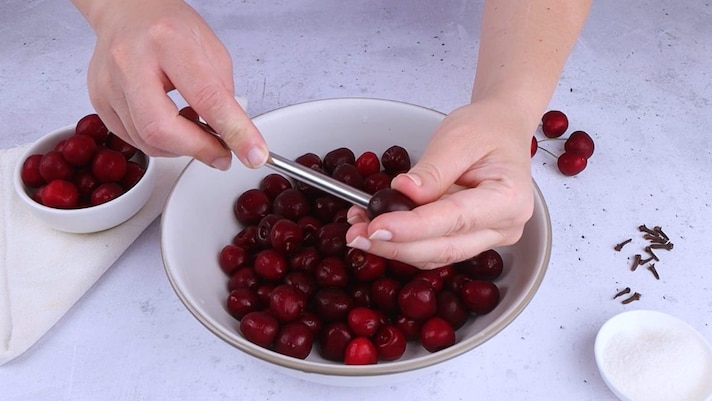
Start by pitting the fresh cherries using a metal sraw.
Start by pitting the fresh cherries using a metal sraw.
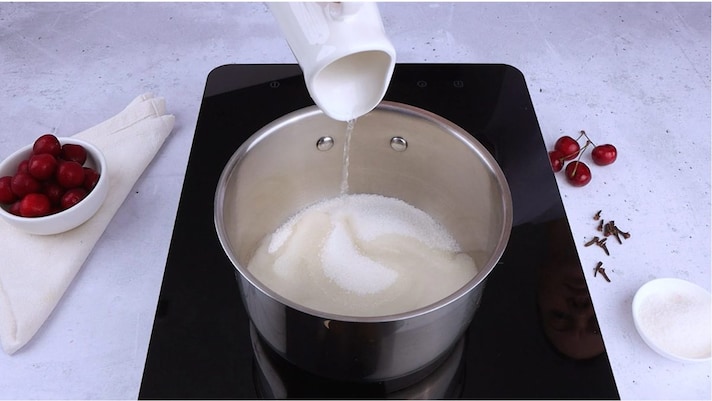
In a small pot, boil the water with the sugar until it has dissolved.
In a small pot, boil the water with the sugar until it has dissolved.
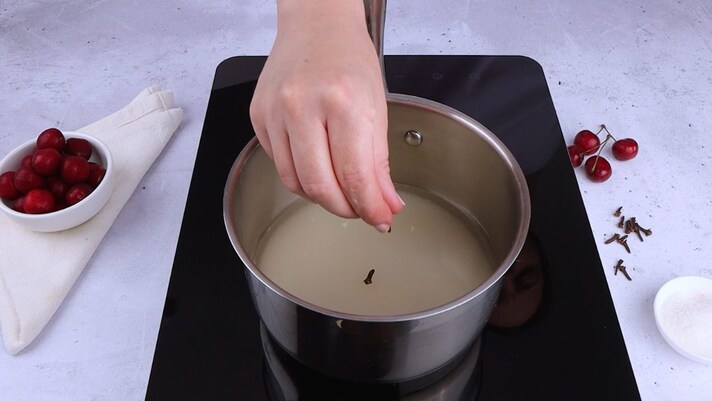
Add the cloves and the cinnamon stick.
Add the cloves and the cinnamon stick.
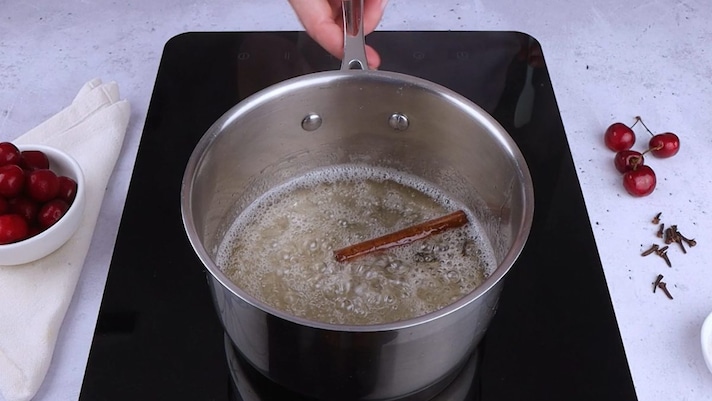
Place on the heat and let the syrup cook for about 4-5 minutes or until it boils. When finished, turn off the heat and let it cool.
Place on the heat and let the syrup cook for about 4-5 minutes or until it boils. When finished, turn off the heat and let it cool.
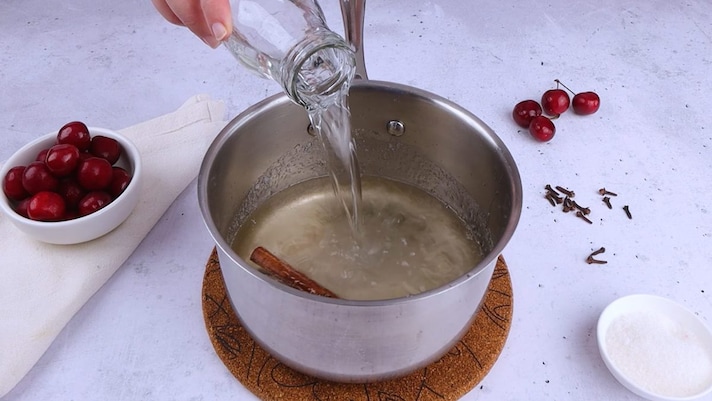
Combine the alcohol with the now cold sugar syrup and mix carefully.
Combine the alcohol with the now cold sugar syrup and mix carefully.
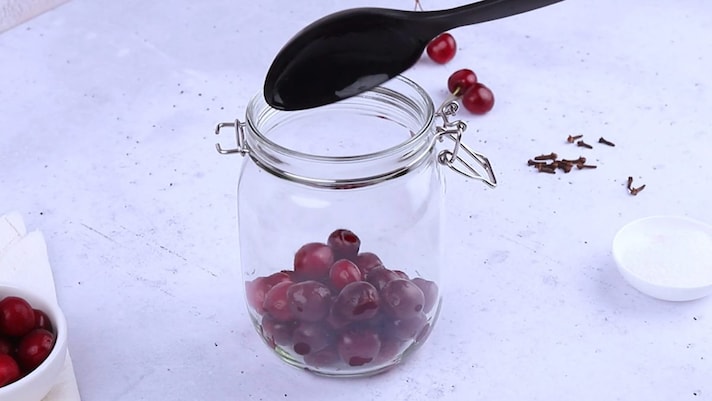
Place the pitted cherries in a sterilized glass jar.
Place the pitted cherries in a sterilized glass jar.
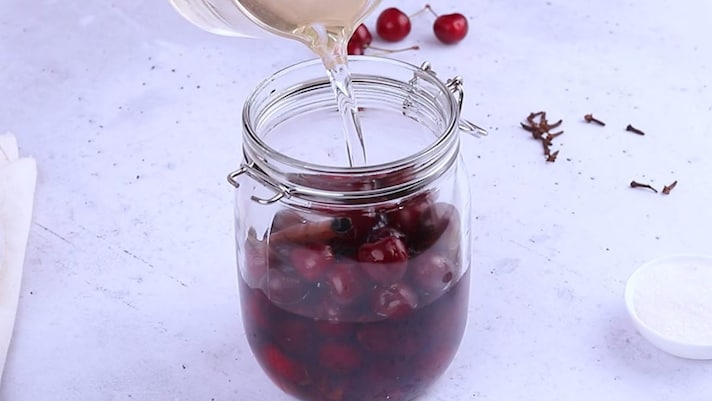
Cover the fruit with the alcoholic liquid, then close the jar tightly and leave to rest at room temperature for at least 7 days, shaking the jar from time to time.
Cover the fruit with the alcoholic liquid, then close the jar tightly and leave to rest at room temperature for at least 7 days, shaking the jar from time to time.
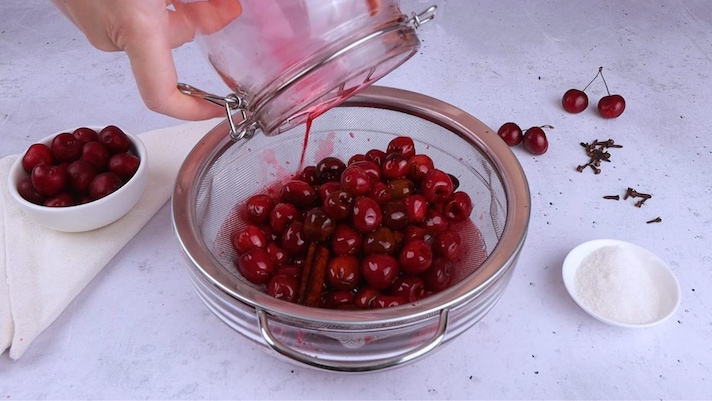
Once the resting time has elapsed, filter the liqueur with a fine mesh strainer.
Once the resting time has elapsed, filter the liqueur with a fine mesh strainer.

Pour the liquor into a glass bottle with an airtight cap and let it macerate for another 2-3 weeks.
Pour the liquor into a glass bottle with an airtight cap and let it macerate for another 2-3 weeks.
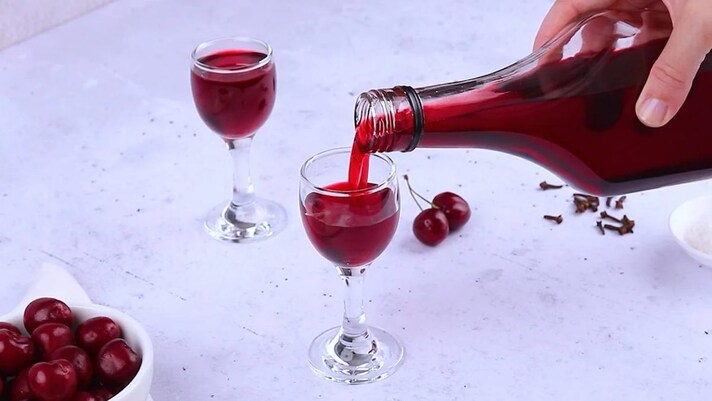
Once the time has passed, distribute the liqueur into individual glasses, serve and enjoy!
Once the time has passed, distribute the liqueur into individual glasses, serve and enjoy!
;Resize,width=767;)
;Resize,width=712;)
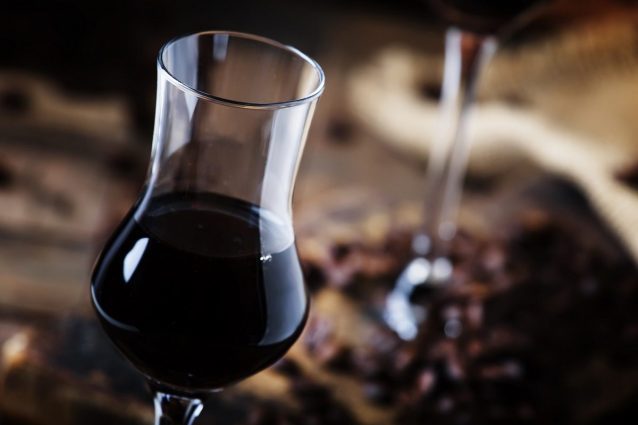;Resize,width=712;)
;Resize,width=712;)
